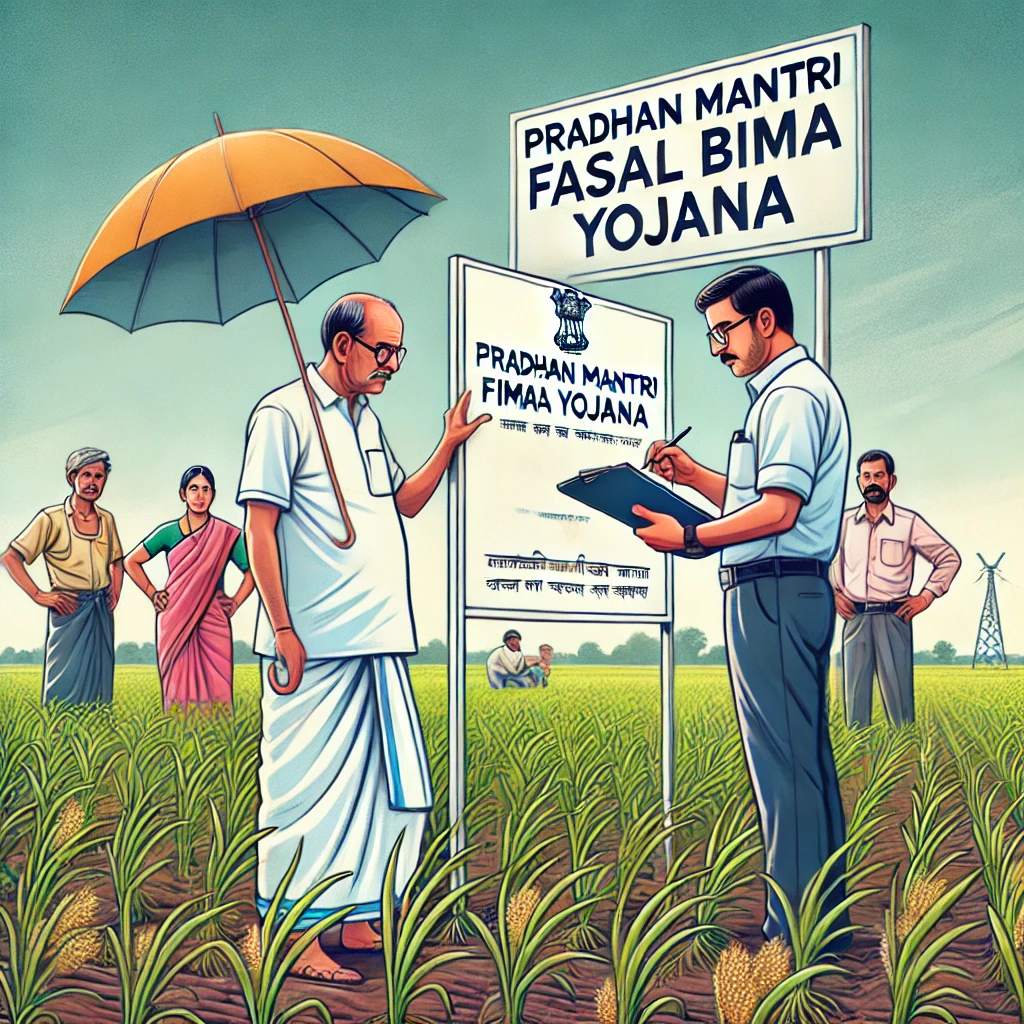In a nation where a large portion of the economy is contributed by agriculture, schemes like the Pradhan Mantri Fasal Bima Yojana (PMFBY) play a crucial role. Launched in 2016, this scheme aims to mitigate the hardships faced by farmers due to crop losses stemming from unforeseen events. The PMFBY is important in ensuring the financial stability of farmers by providing them with insurance coverage for their crops.
- Affordable Premiums: Farmers pay a nominal rate, making the scheme accessible.
- Comprehensive Coverage: Protects against non-preventable natural risks.
- Technology Integration: Uses modern technology to speed up claim settlements.

What is Pradhan Mantri Fasal Bima Yojana?
The Pradhan Mantri Fasal Bima Yojana (PMFBY) is the government’s flagship crop insurance scheme. It aims to provide comprehensive insurance coverage against crop loss due to non-preventable natural risks. These include risks like natural disasters, pests, and diseases. The scheme operates on a uniform premium of 2% to be paid by farmers for Kharif crops, and 1.5% for Rabi crops. The premium for commercial and horticultural crops is capped at 5%. The difference between the actual premium and the amount paid by the farmers is subsidized by the government. It is shared equally between the state and the central government.
What is Covered Under PMFBY?
Under PMFBY, a wide range of risks are covered which threaten crop production and lead to financial losses for the farmers. The coverage includes:
- Pre-sowing: Losses incurred due to failed sowing or planting due to deficit rainfall or adverse seasonal conditions.
- Post-harvest losses: Coverage extends to cyclones, cyclonic rains, and unseasonal rains throughout India. Thereby, impacting produce left in the field for up to two weeks after harvesting.
- Localized calamities: Include hailstorms, landslides, inundation, and natural fires, which can affect isolated patches within a larger farming area.
Pradhan Mantri Fasal Bima Yojana Objectives
The primary objectives of the PMFBY are straightforward yet impactful:
- Stabilize Income: To safeguard farmers against any sharp decline in farm income due to crop failures.
- Encourage Innovation: To encourage farmers to adopt innovative practices and ensure sustainable agricultural production.
- Minimize Premium Burden: To reduce the premium burden on farmers and ensure early settlement of claims for the full insured sum.
Implementation Strategies
To achieve these objectives, the government collaborates with multiple stakeholders, including insurance companies, technology providers, and state authorities. Thus, to ensure efficient policy implementation and claim processing.
What were the PM Fasal Bima Yojana Challenges?
The PM Fasal Bima Yojana, despite its beneficial intentions, encountered several significant challenges that impacted its effectiveness:
- Delayed Claim Payments: One of the most pressing issues was the delayed payment of claims. Farmers, who depend on timely financial assistance to recover from crop losses, often face extended waiting periods. This delay was primarily due to the bureaucratic processing of claims and the lack of coordination between insurance companies, state governments, and central authorities.
- Low Awareness and Misunderstandings: A substantial number of farmers were either unaware of the details of the scheme or held misconceptions about its benefits and claim processes. This lack of understanding stemmed from insufficient outreach and educational initiatives about the scheme’s workings and benefits, leading to lower enrollment rates and underutilization of the insurance provided.
- Complexity in Accessing Benefits: The process of registering for and claiming insurance was often complex and bureaucratic, deterring farmers from participating. The requirement for extensive documentation and the tedious nature of the formalities required could be overwhelming, especially for small-scale farmers.
- Inadequate Coverage and Exclusions: Some critics pointed out that the coverage scope of PMFBY was not comprehensive enough, as certain crops and types of agricultural losses were not included in the scheme. Additionally, the assessment of crop damage was sometimes not in tune with local agricultural realities, leading to insufficient compensation.
However, addressing these challenges is crucial for the success of the scheme, as they directly affect its accessibility and the timely support it aims to provide to India’s farming community.
Revamping the Pradhan Mantri Fasal Bima Yojana
Recognizing these challenges, the government has initiated steps to revamp PMFBY:
- Technology Integration: Use of satellite imagery and drones for accurate crop yield estimation.
- Improved Accessibility and Transparency: Mobile apps introduced for easy enrollment and claim settlement.
- Enhanced Coverage: Efforts to include more crops and regions under the scheme.
These enhancements aim to make the scheme more farmer-friendly and responsive to their needs. Thereby, ensuring that PMFBY achieves its goal of protecting India’s farmers against agricultural risks.


